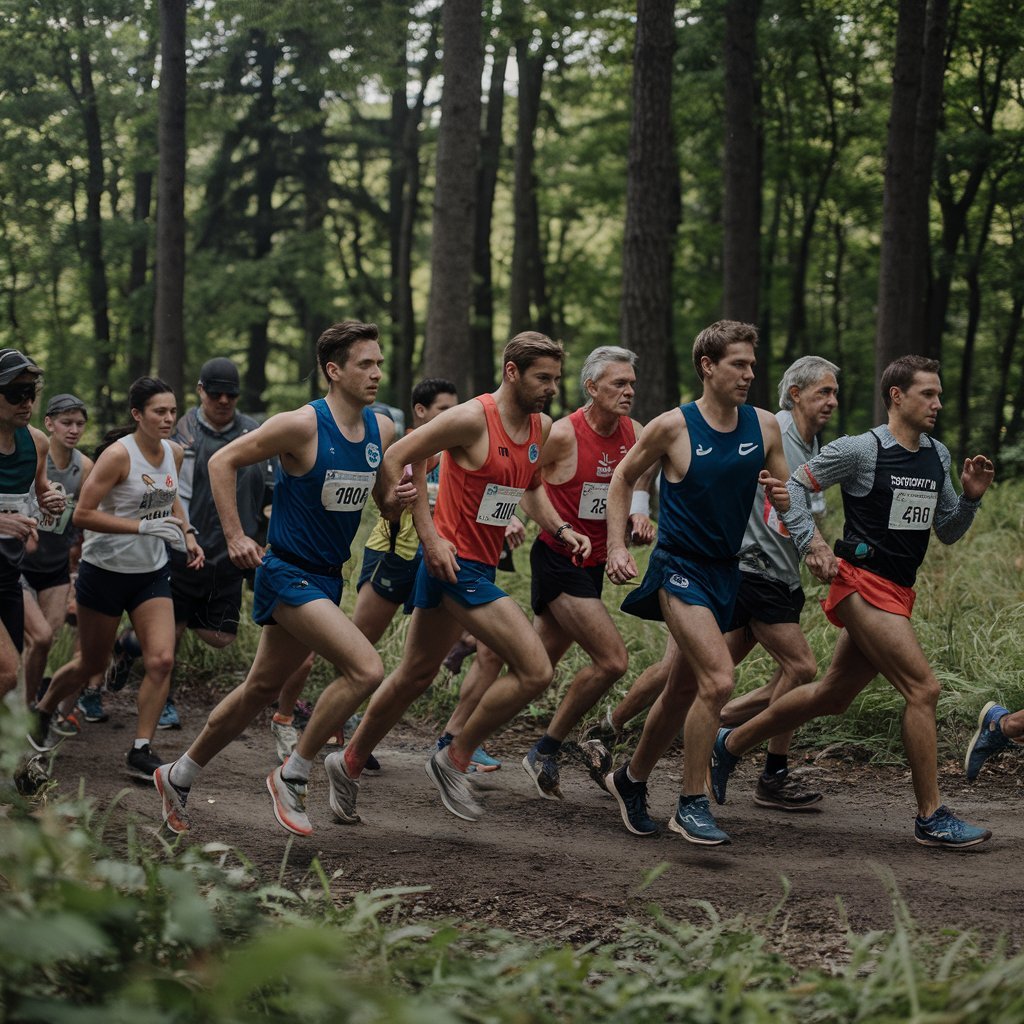The Bear Race 20024: A Complete Guide to the Thrilling Event in the USA
The Bear Race has captivated runners, adventure enthusiasts, and spectators for decades, offering not just a race but an unforgettable experience. The Bear Race 20024 continues this tradition, taking the event to new heights.
In this comprehensive article, we’ll explore everything you need to know about The Bear Race 20024—from its origins to race day tips, gear recommendations, and beyond. We will also dive deep into the unique aspects that make this particular edition stand out, providing original insights and analyses to ensure this article stands apart from what’s already available online.
Whether you’re a seasoned marathoner or someone thinking about participating for the first time, this guide will arm you with all the knowledge you need to succeed. Our target audience includes residents of the USA who want to know how they can be part of this exciting race, enjoy it as a spectator, or simply learn more about its history and unique features.
Also Read: Amanda Labollita Twitter: Unraveling the Story Behind the Buzz
What Is the Bear Race 20024?
The Bear Race 20024 is an annual endurance event that blends the thrill of competitive racing with the challenge of navigating natural landscapes. It’s a hybrid trail race, combining elements of road running with off-road, rugged terrain, which makes it as mentally demanding as it is physically grueling. With its roots deeply embedded in the history of endurance sports, this race attracts runners from across the United States and beyond.
Key Highlights of The Bear Race 20024:
- Location: Taking place in various national parks and natural reserves, offering breathtaking views of mountains, forests, and lakes.
- Difficulty Level: Challenging, with steep inclines, rocky paths, and unpredictable weather conditions.
- Race Options: Offers different race lengths—ranging from half-marathons to full marathons, and ultra-races.
- Unique Theme: The race has a bear motif, and participants must overcome “bear traps” or challenges along the course.
- Camaraderie: A strong sense of community among runners, with a shared emphasis on mental toughness and resilience.

The History and Evolution of The Bear Race
The Bear Race has its roots in endurance racing from the late 20th century, originally conceived as a way for long-distance runners to test their limits in both road and trail environments. The idea was to merge traditional marathon races with the unpredictability of trail running, introducing an element of adventure. Over the years, the race has evolved, incorporating more challenging terrains and even themed obstacles to make it more unique and demanding.
The Bear Race 20024, however, is different. This year marks a special anniversary, and the organizers have gone the extra mile to make the race more intense, both in terms of difficulty and rewards.
Key Milestones in the Evolution of The Bear Race:
- Early 1990s: The Bear Race started as a regional race but quickly gained traction due to its unique mix of road and trail running.
- 2000s: The race began attracting international attention, drawing elite runners from around the world.
- 2010s: Introduction of the “Bear Traps,” which are strategic points along the course where runners face obstacles that test their mental and physical endurance.
- 2024 (The Bear Race 20024): The 20024 edition promises to be the most challenging and rewarding yet, with new obstacles, tougher terrains, and more runners than ever before.
Also Read: Amanda Labollita Twitter: Unraveling the Story Behind the Buzz
Why the Bear Race 20024 is More Than Just a Race
For many, The Bear Race 20024 isn’t just about competing or finishing a marathon—it’s a complete experience that pushes participants beyond their limits. The race tests not only physical endurance but also mental toughness. The breathtaking landscapes, camaraderie among racers, and adrenaline-pumping challenges along the course set it apart from other marathon or trail races.
1. Endurance Meets Strategy
What makes The Bear Race 20024 so unique is that it requires more than just running endurance. The strategic placement of obstacles, or “bear traps,” along the course forces runners to think on their feet. These traps could be anything from rope climbs to mud crawls or even mental puzzles that participants must solve before continuing. The concept is simple: much like in nature, where bears are both strong and cunning, runners must rely on brains as much as brawn.
2. Stunning, Challenging Landscapes
The Bear Race is hosted in some of the most scenic, but challenging terrains in the USA. In previous years, courses have traversed through mountain passes, forests, and rivers. The 20024 race will take place in a brand-new location, pushing runners to conquer even tougher trails with high altitudes and steep, rocky inclines. This not only adds to the physical challenge but also offers runners a sense of awe and connection with nature.
3. A Culture of Camaraderie
Runners in the Bear Race share a unique bond. It’s a race where personal achievement matters as much as teamwork. Whether you’re a seasoned marathoner or a first-time trail runner, the camaraderie among participants is palpable. It’s not uncommon to see racers helping each other through difficult obstacles, cheering each other on, and sharing tips on pacing or nutrition strategies. The event encourages a “family” vibe, even for competitive runners aiming for top finishes.

Also Read: Amanda Labollita Twitter: Unraveling the Story Behind the Buzz
Preparing for The Bear Race 20024: Training Tips and Strategies
Successfully completing The Bear Race 20024 requires a combination of physical preparation, mental toughness, and a solid race-day strategy. Whether you’re training for the full marathon or the half-marathon version, the following tips will help you prepare for the unique challenges that the race presents.
1. Build Your Endurance Gradually
Training for an endurance race like The Bear Race 20024 requires a well-structured plan that gradually builds your stamina. Focus on progressively increasing your weekly mileage, incorporating a mix of road and trail runs. It’s important to start slow and increase your mileage by no more than 10% per week to avoid injury.
Training Program Example:
- Week 1-4: Start with short trail runs of 3-5 miles, focusing on pace and maintaining a steady rhythm. Incorporate cross-training like cycling or swimming.
- Week 5-8: Increase trail runs to 6-10 miles, with weekend long runs of up to 12 miles.
- Week 9-12: Incorporate intervals of fast running, hill repeats, and cross-training. Long runs should now be between 15-20 miles.
2. Focus on Strength Training
Runners often underestimate the importance of strength training. In a race like The Bear Race 20024, where steep inclines and obstacles demand a lot from your muscles, building lower body and core strength is essential. Exercises like lunges, squats, deadlifts, and planks can improve your overall stability and help prevent injuries.
3. Train Your Mind
Mental preparation is just as important as physical training. The Bear Traps placed throughout the course are designed to test your mental resilience. Practice staying calm under pressure by incorporating mindfulness techniques or visualization exercises into your training routine. When you hit a wall during training, practice pushing through it—this will prepare you to handle the mental challenges that come on race day.
4. Master Trail Running Techniques
If you’re primarily a road runner, trail running presents a new set of challenges. Trails are often uneven, rocky, and can require sudden changes in direction. Practice running on uneven terrain to improve your agility and balance. Learn how to pace yourself on inclines, and practice descending hills without losing control.
Also Read: Amanda Labollita Twitter: Unraveling the Story Behind the Buzz
Essential Gear for The Bear Race 20024
Choosing the right gear can make all the difference when it comes to comfort, performance, and safety during The Bear Race 20024. Here’s a rundown of essential equipment for participants:
1. Trail Running Shoes
Investing in a good pair of trail running shoes is crucial for navigating the rocky, uneven terrain that defines The Bear Race. Look for shoes that offer:
- Grip: High-traction soles for better grip on muddy, rocky surfaces.
- Support: Adequate ankle and arch support to prevent injuries.
- Water Resistance: Waterproof or quick-drying materials are a plus, especially for races with water obstacles or stream crossings.
2. Hydration Pack
Hydration is critical for long races, especially on trails where water stations may be few and far between. A lightweight hydration pack or vest allows you to carry enough water and electrolytes to stay hydrated throughout the race.
3. Layered Clothing
Weather conditions during trail races can be unpredictable, especially at higher elevations. Dress in layers so you can adapt to changing temperatures. Start with a moisture-wicking base layer to keep sweat off your skin, add a lightweight, breathable mid-layer for insulation, and consider packing a windproof or waterproof shell in case of rain or strong winds.
4. Nutrition
Running a race like The Bear Race 20024 requires proper fuel. Energy gels, bars, and electrolyte tablets are easy to carry and provide a quick boost when you need it most. Practice eating and drinking while running during your training to avoid any surprises on race day.

Race Day Strategy for The Bear Race 20024
A solid race day strategy can make or break your performance in The Bear Race 20024. Here’s how to maximize your chances of success:
1. Start Slow and Steady
It’s easy to get caught up in the excitement at the start line, but pacing is key in a race like this. Start slow, especially if you’re running the marathon or ultra-distance. Conserve your energy for the more challenging sections of the race, such as steep climbs or technical descents.
2. Stay Hydrated
Dehydration is one of the biggest challenges runners face, particularly in trail races. Make sure you drink small amounts of water or electrolytes regularly, even if you don’t feel thirsty. The hydration pack will be your best friend.
3. Tackle Obstacles with a Calm Mind
The Bear Traps placed throughout the race are designed to disrupt your flow. These obstacles can be mentally and physically draining if you approach them hastily. Take a moment to assess each challenge, and tackle it strategically rather than rushing through.
4. Listen to Your Body
Long races can be hard on the body. Pay attention to any signs of fatigue, pain, or dehydration, and adjust your pace or take breaks as needed. Remember that finishing strong is more important than burning out halfway through.

Also Read: Amanda Labollita Twitter: Unraveling the Story Behind the Buzz
Post-Race Recovery Tips
Finishing The Bear Race 20024 is a huge accomplishment, but it’s important to prioritize recovery to avoid injury and prepare for future races.
1. Cool Down
After crossing the finish line, take time to walk or jog slowly to cool down. This helps bring your heart rate back to normal and prevent stiffness.
2. Stretch and Foam Roll
Gently stretching your muscles and using a foam roller can help alleviate post-race soreness and prevent muscle tightness in the following days.
3. Refuel and Hydrate
Your body will need to replenish the calories and fluids lost during the race. Aim to eat a balanced meal that includes carbohydrates, protein, and healthy fats within an hour of finishing. Drinking plenty of water and adding an electrolyte solution can also help restore hydration.
4. Rest and Recover
Give your body time to recover by taking a few days off from intense exercise. Light walking, swimming, or yoga can aid in recovery, but avoid jumping back into full-on training too soon.
The Future of The Bear Race 20024
The Bear Race has become a staple in the endurance sports calendar, and each year brings something new and exciting. The Bear Race 20024 is poised to be the biggest and most challenging event yet, but what does the future hold for this iconic race?
1. Expansion to New Locations
As the race continues to grow in popularity, there’s a possibility that future editions will take place in new, even more challenging locations. From mountainous terrains to coastal cliffs, the options are endless for race organizers looking to up the ante.
2. More Technological Integration
With advancements in wearable technology and race-tracking apps, future editions of The Bear Race may include more integrated tech features. This could range from real-time obstacle tracking to AI-assisted performance analytics, allowing runners to get instant feedback on their performance.
3. Growing Community and Inclusion
The race already has a strong sense of camaraderie, but future editions may focus more on inclusivity, opening the race to more participants with varying levels of experience. From beginners to elite runners, The Bear Race aims to foster a supportive environment for all.

Also Read: Amanda Labollita Twitter: Unraveling the Story Behind the Buzz
FAQs About The Bear Race 20024
1. What is The Bear Race 20024?
The Bear Race 20024 is a challenging endurance race that blends road and trail running. It features natural obstacles and mental challenges, known as “Bear Traps,” to push participants to their limits.
2. How difficult is The Bear Race 20024?
The Bear Race 20024 is considered a high-difficulty race, particularly for its steep inclines, rough terrains, and challenging obstacles. It requires a combination of physical endurance, mental toughness, and strategic thinking.
3. What are Bear Traps?
Bear Traps are obstacles or mental challenges placed at various points along the racecourse. They test participants’ agility, strength, and mental focus, adding an extra layer of complexity to the race.
4. Can beginners participate in The Bear Race 20024?
Yes, though beginners are encouraged to train thoroughly and perhaps start with the shorter race options, such as the half-marathon. The race is open to all experience levels but is physically and mentally demanding.
5. What should I wear for The Bear Race 20024?
Participants should wear trail running shoes, layered moisture-wicking clothing, and bring hydration gear. Since the weather can be unpredictable, it’s advisable to pack for all conditions.
6. Is The Bear Race 20024 family-friendly?
While the race itself is intense, the event often includes festivities, food stalls, and spectator areas, making it enjoyable for family and friends who want to support the runners.
Conclusion
The Bear Race 20024 stands as a unique, multifaceted challenge that goes beyond traditional marathon racing. It combines endurance, strategy, and camaraderie in a breathtaking natural setting.
Whether you’re aiming to finish at the top or just looking to experience the adventure of a lifetime, this race offers something for everyone. With proper training, the right gear, and a strong mindset, you can conquer the race and walk away with not just a medal but a sense of accomplishment that lasts a lifetime.
If you’re ready to test your limits, lace up your shoes and start preparing for The Bear Race 20024—it promises to be the adventure of a lifetime!






